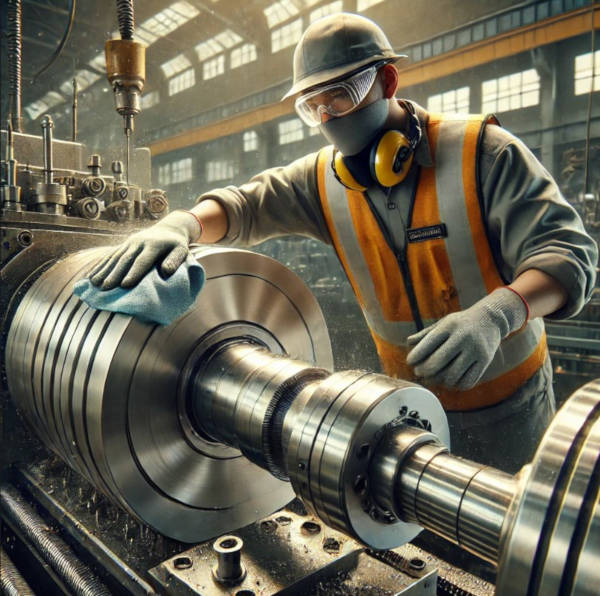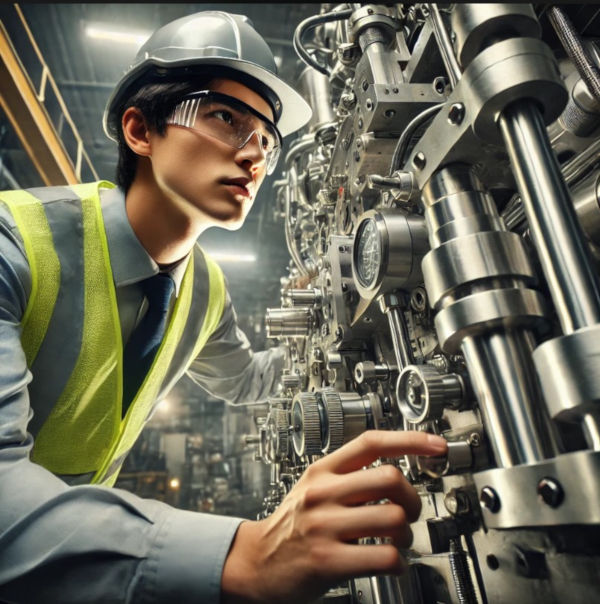When it comes to industrial machinery, most people think that newer is better. But what if I told you that buying used industrial machinery could be the smarter choice, both for your wallet and for the planet? That’s right—opting for pre-owned equipment can make a significant environmental impact. Let’s dive into why buying used machinery isn’t just a savvy business move but also a win for Mother Earth.
Understanding Used Industrial Machinery
Before we get into the green benefits, it’s important to understand what we mean by “used industrial machinery.” We’re talking about heavy-duty machines that have already seen some action on the production line. These aren’t brand-new, straight-out-of-the-factory units; they’ve been used, refurbished, and are ready for a second round of service.
What Qualifies as Used Industrial Machinery?
So, what exactly qualifies as used machinery? Essentially, any piece of equipment that has been previously owned and operated. This can range from slightly used to decades-old machines that have been expertly maintained. The key here is that these machines are still fully functional and can perform their intended tasks just as well as their newer counterparts.
The Role of Industrial Machinery in Manufacturing
Industrial machinery plays a pivotal role in the manufacturing sector. These machines are the backbone of production lines, driving efficiency and productivity. Without them, modern manufacturing as we know it would grind to a halt. However, this comes with a cost—both in terms of financial investment and environmental impact.
The Environmental Impact of New vs. Used Machinery
Now, let’s get to the crux of the matter—how does the environmental impact of new machinery compare to that of used? Spoiler alert: used machinery wins hands down.
Resource Consumption
New machinery might be shiny and packed with the latest technology, but it comes with a hefty environmental price tag. The production of new machines requires significant raw materials, from metals to plastics, and consumes a large amount of energy. By contrast, used machinery has already gone through this resource-intensive manufacturing process, meaning you’re essentially recycling when you buy it.
Waste Generation
Manufacturing new machinery doesn’t just use up resources; it also generates a considerable amount of waste. From offcuts of metal to excess chemicals, the process is far from waste-free. Used machinery, on the other hand, sidesteps this entirely. There’s no need for additional manufacturing, which means no new waste is produced.
Advantages of Buying Used Industrial Machinery
So, what exactly are the benefits of going the used route? Well, they are more extensive than you might think.
Reduction in Carbon Footprint
One of the most significant environmental benefits of buying used machinery is the reduction in carbon footprint. New machinery production is energy-intensive, resulting in substantial carbon emissions. When you purchase used machinery, you’re cutting out the need for this energy expenditure. It’s like giving the environment a big high-five!
Energy Efficiency
You might be thinking, “But what about energy efficiency? Isn’t new machinery more energy-efficient?” Not necessarily. Many used machines can be retrofitted with newer, more efficient parts, allowing you to enjoy the same level of energy efficiency without the environmental cost of manufacturing a brand-new machine.
Minimizing Industrial Waste
Another critical benefit is the reduction of industrial waste. Every time a machine is discarded, it adds to the growing problem of industrial waste, which is often difficult to recycle or repurpose. By extending the life of used machinery, you’re not only saving money but also reducing the amount of waste that ends up in landfills.
Extending Product Life Cycle
The longer a machine is in operation, the better it is for the environment. By keeping used machinery in service, you’re helping to extend its life cycle, which means less frequent replacements and, subsequently, less waste. It’s a simple concept, but it has a powerful impact.
Economic Benefits Align with Environmental Goals
And here’s the kicker—what’s good for the environment is often good for your bottom line too. Used machinery is typically much more affordable than new, which means you’re saving money while also making a greener choice. It’s a win-win situation that proves you don’t have to sacrifice profitability for sustainability.
Case Studies of Successful Implementation
Still not convinced? Let’s look at some real-world examples of industries that have successfully embraced used industrial machinery to their advantage.
Case Study 1: Automotive Industry
The automotive industry is one of the biggest adopters of used industrial machinery. With constant demand for efficiency and cost-effectiveness, many automotive companies have turned to used equipment to meet their needs without the environmental burden of new machinery production. It’s a practical solution that keeps both their operations and the planet running smoothly.
Case Study 2: Food Processing Industry
Similarly, the food processing industry has seen significant benefits from using pre-owned machinery. With stringent regulations and the need for consistent production quality, used equipment offers a reliable and eco-friendly option. Plus, by opting for used machinery, these companies can allocate more of their budget to other critical areas, such as research and development.
Overcoming the Myths About Used Industrial Machinery
There’s no denying that some people have reservations about buying used machinery. Let’s tackle those myths head-on.
Myth 1: Used Machinery Is Less Reliable
A common misconception is that used machinery is less reliable than new. But the truth is, with proper maintenance and inspection, used equipment can be just as dependable as new. In fact, many machines are built to last for decades, and with regular upkeep, they can continue to perform at a high level well into their later years.
Myth 2: Used Equipment Is Obsolete
Another myth is that used machinery is outdated and lacks the latest features. While it’s true that used machines might not have the very latest technology, many can be easily upgraded or retrofitted with modern components. This allows you to benefit from advanced features without the environmental and financial costs of purchasing new machinery.

Steps to Take When Purchasing Used Machinery
If you’re considering buying used industrial machinery, it’s essential to approach the process with care. Here’s a guide to help you make an informed decision.
Conduct Thorough Inspections
Before you buy, thoroughly inspect the machinery. Check for any signs of wear and tear, and ensure all components are in working order. If possible, bring along a technician or someone who is familiar with the type of machinery you’re purchasing. This extra set of eyes can help spot potential issues that might not be immediately obvious.

Verify Maintenance History
Just like a used car, the history of maintenance is crucial when it comes to industrial machinery. Ask the seller for records of any maintenance work that has been done on the machine. Regular maintenance indicates that the machine has been well cared for, which can give you peace of mind about its reliability and performance.
Consider Upgrades and Retrofits
One of the great things about used machinery is that it can often be upgraded or retrofitted with new parts to improve its performance. Whether it’s installing more energy-efficient components or adding modern features, these upgrades can make your used machinery almost as good as new—without the hefty price tag.
Buying used industrial machinery is not just a smart business move; it’s also a way to contribute positively to the environment. By opting for pre-owned equipment, you can significantly reduce your carbon footprint, minimize waste, and extend the life cycle of valuable machinery. Plus, you’ll often save money in the process, creating a win-win situation for your business and the planet.
The next time you’re in the market for industrial machinery, consider going the used route. You’ll be making a choice that’s as good for your bottom line as it is for the environment. And in today’s world, where sustainability is becoming increasingly important, that’s a decision you can feel proud of.
FAQs
- Is used industrial machinery as reliable as new machinery?
Yes, with proper maintenance and thorough inspections, used industrial machinery can be just as reliable as new machinery. Many machines are designed to last for decades, and with the right care, they can continue to perform effectively. - Can used machinery be upgraded?
Absolutely! Used machinery can often be retrofitted or upgraded with modern components, allowing you to enjoy the latest features and improved performance without the high cost of buying new. - How does buying used machinery help the environment?
Buying used machinery reduces the demand for new manufacturing, which in turn cuts down on resource consumption and waste production. It also extends the life cycle of existing equipment, reducing the overall environmental footprint. - What should I look for when buying used industrial machinery?
When purchasing used machinery, it’s important to conduct a thorough inspection, verify the maintenance history, and consider the potential for upgrades or retrofits. These steps will help ensure you’re making a wise investment. - Are there financial benefits to buying used industrial machinery?
Yes, used machinery is typically much more affordable than new, allowing you to save money while also benefiting from a reliable piece of equipment. Additionally, the lower cost aligns with environmental benefits, making it a financially and environmentally sound choice.




